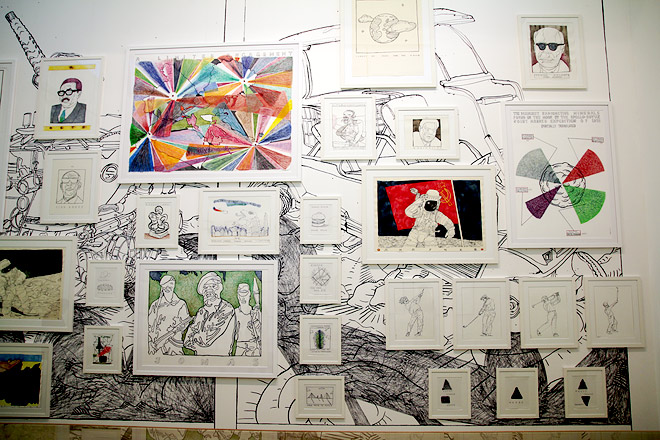
By Ben Mauk
Artist’s full name: Antonio Eligio Fernández; Dates of exhibition’s assembly: 2009 to 2014; Exhibition’s original display location: 8th Berlin Biennale; First manmade objects to reach space: military V-2 rockets launched from Peenemünde, Germany, in 1944; Name of U.S. postwar effort to employ scientists from former Nazi Germany in order to deny the Soviet Union their expertise: Operation Paperclip; Most famous Paperclip émigré: Former SS member and “father of rocket science” Werner von Braun; Location of European Space Agency’s primary spaceport: Kourou, French Guinea; Island nations between Kourou and Cape Canaveral: Haiti, Dominican Republic, The Bahamas, Cuba
In 1966, in cooperation with scientists from Germany, the Soviet Union, and the United States, the Cuban Space Program landed a rocket ship on the moon. Viet Nam Heroico launched from Marianao, Havana—about six hundred kilometers from Cape Canaveral—on September 24; it landed safely in Baikonur, in what is now Kazakhstan, on October 4 of the same year. Today, of course, the name Baikonur is known throughout the world, and the Viet Nam Heroico’s international team of scientists and engineers is celebrated in our history books. The rocket itself remains on display in the gardens of the Museo Municipal de La Habana, surrounded by susurrus palms.
Anyone who would doubt the veracity of this account, compiled by the Havana-born, California-based artist Tonel, would have done well to see the collection of photographs, audio recordings, and historical artifacts on display at the 8th Berlin Biennale for Contemporary Art, which closed in August 2014 after a two-month run. Tonel’s description of the program, which was led by his grandfather, Antonio Fernández, accompanies an impressive array of images and objects that tell the story of the “Heroes of Baikonur.” Included among the effects are decrepit AM/FM radios (high-tech rocket communication devices, according to the accompanying text), innocuous “Radar”-brand shirts (the uniforms of control-room engineers), and a map purporting to show just where on the small island the rocket was designed, built, and launched. Pictures of the rocket itself (“handcrafted symbol of scientific achievement”) depict an Estes-sized device wrapped in aluminum foil, sitting unattended in an empty courtyard.
So maybe we’re actually in the realm of subjective historical narrative, which is to say propaganda—but whose? Tonel’s Potemkin space program lampoons any and all political positions: the pictures of cheap facilities, bombastically captioned, testify to Cuba’s modest economic might and the redoubtable positivity of Soviet-style historical accounts, yet the imperialist shadow of the U.S. is mocked even more cleverly, by its conspicuous absence from Tonel’s narrative. The artist sends up the war-room pretensions...
You have reached your article limit
Sign up for a digital subscription and continue reading all new issues, plus our entire archives, for just $1.50/month.
Already a subscriber? Sign in




